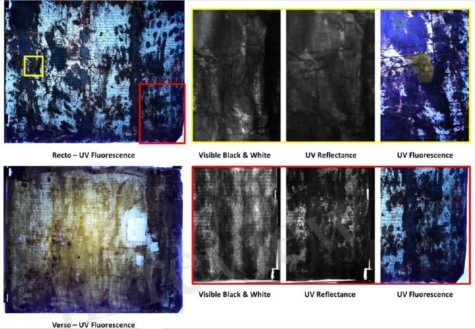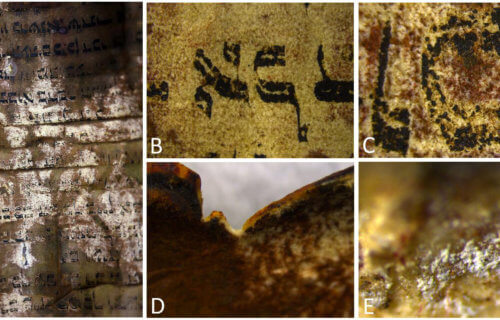MĂGURELE, Romania — As the world turns the calendar ahead to 2021, Romanian researchers are turning the clock back to unearth the rich history of an ancient Jewish manuscript. Using state of the art camera technology, a team from the National Institute for Research and Development in Optoelectronics captured images the naked eye can’t see.
“The goal of the study was to understand what the passing of time has brought upon the object, how it was degraded, and what would be the best approach for its future conservation process,” says co-author Dr. Luminita Ghervase in a media release.

Researchers examined the privately-owned sacred scroll using a combination of imaging techniques. The scroll contained several chapters of the Book of Esther from the Hebrew Bible, but it was in poor condition.
“The use of complementary investigation techniques can shed light on the unknown history of such an object,” Dr. Ghervase explains. “For some years now, non-invasive, non-destructive investigation techniques are the first choice in investigating cultural heritage objects, to comply with one of the main rules of the conservation practice, which is to not harm the object.”
Revealing invisible clues from ancient Jewish manuscript
Multispectral imaging, one of the most common techniques, revealed invisible details about the ancient Jewish manuscript’s wear and tear. A dark stain on the scroll appeared when viewed with ultraviolet light, suggesting it had been repaired in the past using an organic material like resin.
The researchers then examined the scroll with a technique called hyperspectral imaging to analyze the material composition of the ink on the parchment. The team discovered two types of ink, again backing up the idea someone had already tried to repair the scroll. These materials were then broken down even further with the help of a computer algorithm.
“The algorithm used for materials classification has the potential of being used for identifying traces of the ink to infer the possible original shape of the letters,” Dr. Ghervase adds.
More clues to the scroll’s past
The scroll then headed for scans under x-ray fluorescence (XRF) which identified the chemicals in both the ink and the manufacturing of the parchment. Scientists discovered rich concentrations of zinc in the paper, a metal often linked to the bleaching process. This gave the team another sign of some possible past restoration.
Finally, Romanian researchers conducted a Fourier-transform infrared (FTIR) spectrometer to study how some of the chemicals have changed over time. This determined how quickly the scroll was deteriorating by looking at collagen levels, which is made from animal skin. Combining these techniques could help professionals restore other ancient pieces of history to their former glory.
“They can wisely decide if any improper materials had been used, and if such materials should be removed,” Dr. Ghervase concludes. “Moreover, restorers can choose the most appropriate materials to restore and preserve the object, ruling out any possible incompatible materials.”
The findings of the discovery appear in the journal Frontiers in Materials.
SWNS writer Tom Campbell contributed to this report.
